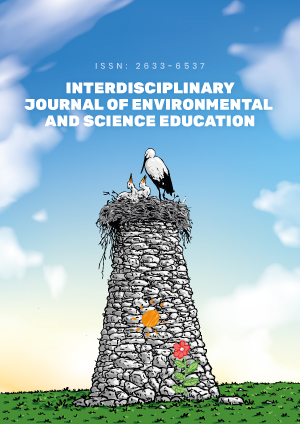Abstract
Socioscientific issues (SSI) education provides a framework for students to learn about controversial scientific topics such as climate change, vaccines, and genetic engineering, but rarely measures specific personal factors in student decision-making. SSI educators might benefit from building on behavior theories such as the Theory of Planned Behavior (TPB) and Value-Belief-Norm Theory of Environmentalism (VBN) in examining how students make decisions about different types of environmental issues. Undergraduate students (n=132) were surveyed to investigate for which types of behavior TPB, VBN, or both theories are most effective, and to explore whether climate change knowledge was a significant predictor of behavior. Behaviors were divided into indirect behaviors with recycling as a direct behavior comparison. The combined theories of behavior best predicted behavioral intentions in regression models over either theory individually. Recycling, a direct environmental behavior, was predicted by different determinants than three indirect environmental behaviors. Climate change knowledge was not a significant predictor in any of the models. These results support the use of different behavior models for different behaviors and exploration of subjective and personal norms around environmental behavior in the SSI classroom.
License
This is an open access article distributed under the Creative Commons Attribution License which permits unrestricted use, distribution, and reproduction in any medium, provided the original work is properly cited.
Article Type: Research Article
INTERDISCIP J ENV SCI ED, Volume 17, Issue 2, 2021, Article No: e2231
https://doi.org/10.21601/ijese/9335
Publication date: 01 Jan 2021
Article Views: 4158
Article Downloads: 2597
Open Access References How to cite this article
 Full Text (PDF)
Full Text (PDF)